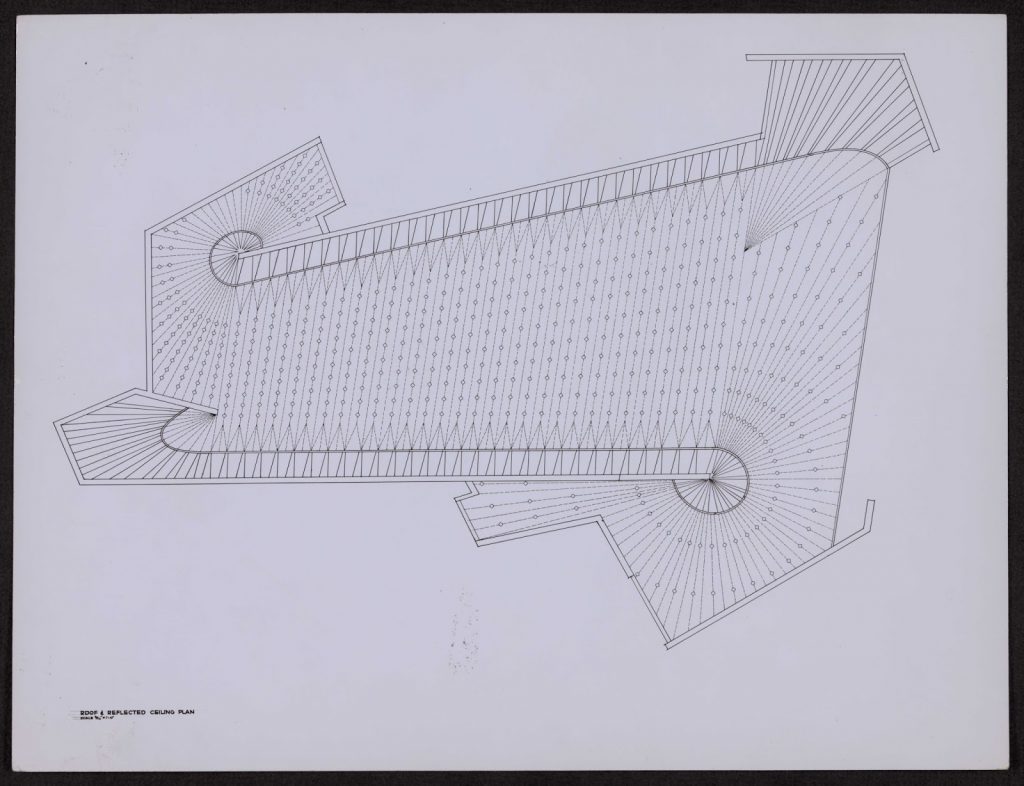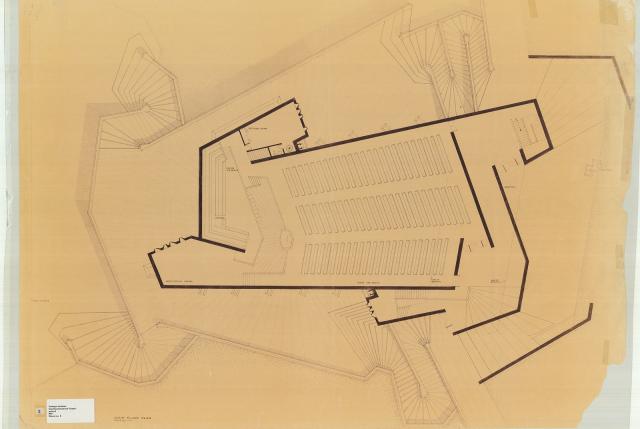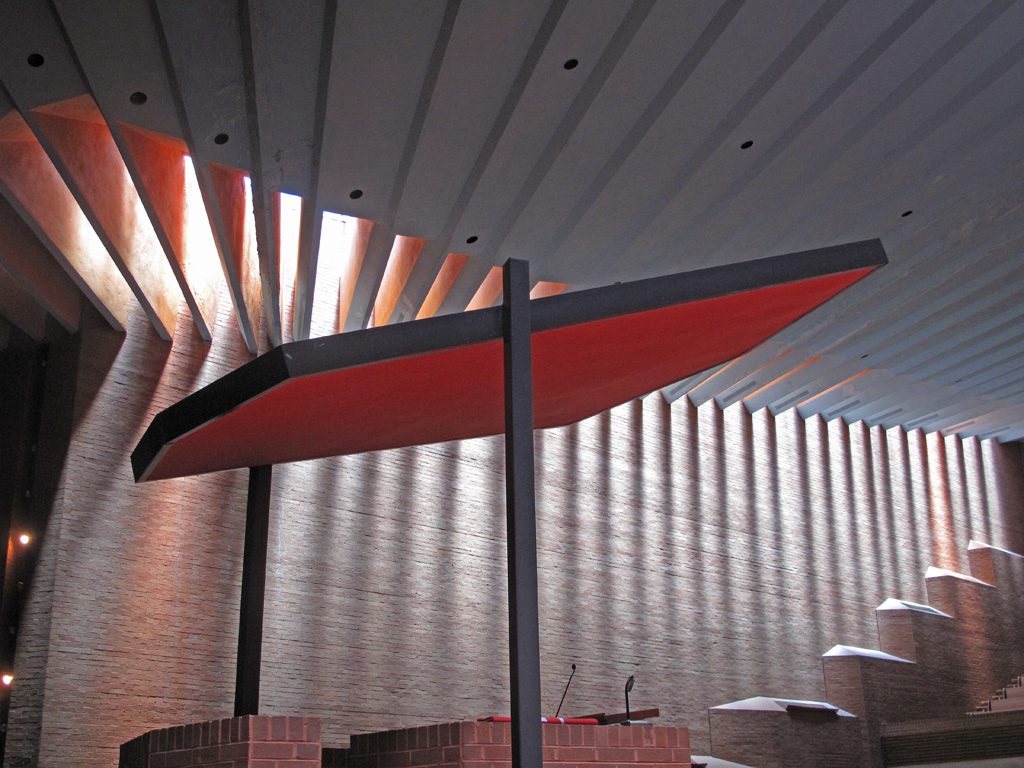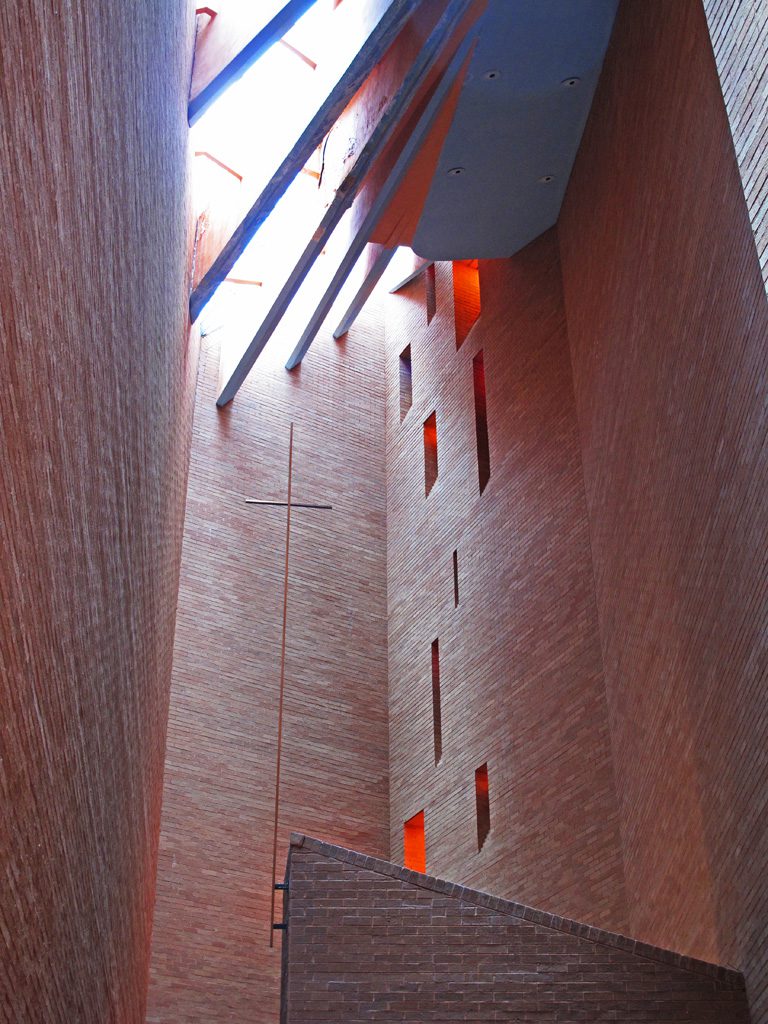“When working on the Tuskegee Chapel, I suggested a continuous slot of glass around the perimeter just below the roof, so the natural light enters the sanctuary diagonally. The roof is hyperbolic paraboloid in form for acoustic reasons, and the space rises diagonally and escapes through glass. The directions of the movement of space are in opposite but balanced directions, which is largely responsible for the dynamic quality of the space. In addition, there is a varying velocity of the movement of space. The floor is almost level, but the ceiling height above the floor constantly changes, so that the space moves rapidly where the ceiling is high but more slowly where the ceiling is low. All of this must be imagined, so that there is a balance between opposite movements of space and light.”
“Durante el desarrollo del proyecto de la capilla de Tuskegee, sugerí que hiciéaramos una pequeña abertura de vidrio en el perímetro de la cubierta para que la luz natural penetrará en el santuario diagonalmente. La propia cubierta a su vez tiene una geometría hiperbólica por motivos acústicos y el espacio se eleva diagonalmente hasta desaparecer detrás de este vidrio. Además este espacio tiene direcciones opuestas pero equilibradas entre sí a lo que se debe su propia calidad y dinamismo; el suelo está a una sola altura pero la cubierta tiene distintas alturas en casi todos sus puntos generando cambios en su percepción, lugares muy rápidos con techos muy altos, y lugares más lentos donde el techo desciende drásticamente. Toda este despliegue de imaginación es a favor de encontrar un balance entre dichos movimientos y la propia luz.”
Interview with Peter Blake included in “Paul Rudolph: The Late Work.” 2003






















